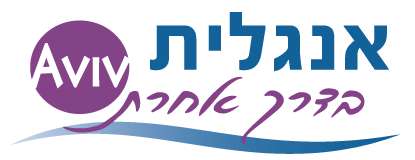
?Could dyslexic reading be prevented
This article is based on 40 years of experience teaching English as a second language (ESL) and almost 20 years of experience teaching English as ESL to students with LBLD (language-based learning difficulties). In addition to this, it is also based on long-standing experience in teaching reading and correct spelling to native English speakers.
All this experience has been translated into special methodologies and techniques to teach reading, in the first place, and then spelling, reading comprehension and the English language as a whole. In this article, we will share our out-of-the-box method, which turns non-readers and dyslexic readers into readers. Further, we will also offer our out-of-the-box ideas regarding how to introduce reading to very young children.
In every learning process, reading plays a significant role. The ability to read will determine the student´s academic achievements and success. For a student unable to read, his learning ability might be limited. For this reason, the
formal education system should prioritize making all necessary efforts to have as few non-readers as possible. The key is to teach reading and to improve students’ reading proficiency, which, as a result, will lead to better reading
comprehension and writing, better learning, and higher academic achievements. When it comes to language acquisition, reading is crucial. It is a tool to be introduced to, practice, memorize and improve the learning process efficiency to obtain better results. Non-readers develop a negative approach to the language acquisition process. They feel discouraged and experience a loss of faith in general and, particularly, in learning a new language. We say, based on our experience, that people who can´t read feel as if they are blind to the language and the process of acquisition. They may be able to hear it, but they often cannot “see” it. Moreover, we believe in multi-sensory activities and techniques whenever we think about improving the learning process. We all know that the learning process should appeal to the five basic senses to achieve a more comprehensive and integrative learning experience. Sight is, indeed, one of the primary senses. Taking it away from the learner lessens the effectiveness and makes language acquisition harder for the student. Reading should be developed as an automatic skill to free the brain to understand better. Reading should become as automated as driving or riding a bike. We don’t constantly remind ourselves to look at the side mirrors while driving, shift the manual gear, or slow down before the red light. These activities are done automatically, without thinking. So should reading be. The more effort is put into decoding, the less the brain is free to understand the content. Understanding is an abstract process, while reading is technical and concrete. Every technical process is more straightforward than an abstract one since abstract is more intellect-dependent. Therefore, to free the brain, we need the highest possible automaticity of this technical activity, namely, “decoding.”
Question: What comes first, knowing the word or reading it? This will depend on whether we are talking about L1 or
L2. In the case of L1, students first know the word and are familiar with it. In the case of L2, students should first be able to read the word (the technical skill) to familiarize themselves with it (abstract process) and later practice to remember it. When dealing with L2, it is essential not to introduce a new word with its visual representation if there are unfamiliar letters or reading patterns. What do we mean by reading patterns? By reading patterns, we mean all the letters' combinations and effects on their neighbouring letters; for example, pronunciation of the G’s, the C’s and the letter combination “true” (as in the picture). We have assembled the most popular patterns, turned them into rules, and built a comprehensive practice program to train the reader to identify and attach sounds to each.
Ensuring accurate reading is critical, and we can achieve it by starting early with the proper training. Every parent knows that reading stories to their young child can significantly impact the richness of their vocabulary.
Bedtime storytelling is a cherished part of every day but can also have disadvantages. How? Reading stories is repetitive, which may hinder global reading. However, we have a practical solution to this problem.
When stories are read to toddlers, they familiarize themselves with the illustrations in the story and later with the test, i.e. with the written words. But both the illustrations and the words are captured as a whole, as a picture, which does
not constitute reading. Let’s pose the following question: If toddlers can identify the word “cow” in the story, would they also be able to recognize the same word in a different place out of this story? In a different story and different context? Moreover, would it be possible for them to read new words composed of the same letters but in a different order? For example,
if children can read "ten", will they also be able to read "net"? They can probably visually recognize what they have
captured but not new combinations of the same components.
The truth is, they cannot actually decode. These toddlers have not identified the different letters and haven’t analyzed nor synthesized the letters to form new words. The young children have identified the word as a whole as if it were a single
visual representation, not different from the picture itself. This is what is called global reading. Global readers do not see the letters that compose the words. They are not aware of the word components or their patterns. This naturally results later on in poor spelling skills and difficulties in reading long, complicated words. Whenever a global reader encounters a new, unfamiliar, long word, they immediately start an inner negative dialogue, which builds up frustration
and desperation: “Why is it so difficult?” “Why does 'g' have so many varied pronunciations? Why is the 'g' once heard and once silent?” “Why are there so many variants?” and “Are there any rules?” Endless questions are posed, which leads to further frustration and demotivated students.
We strongly believe that fluent decoding means better reading comprehension. It helps retain the meaning of what is read, which is then connected to one or more previously read ideas. Poor and slow decoding causes interrupted and
disconnected understanding.
So, how do we train young toddlers to avoid global reading? Because we will not stop reading stories to them, are we? Along with the storytelling, we will train their ears and brains and develop their phonological awareness and skills. Here are some tips:
1. Say a word and train the child to move, jump or clap per the rhythm of the word.
2. Say a word and ask the child to articulate only the opening sound.
3. Say a word and ask the child to articulate only the ending sound.
4. Say a sound and ask the child to make a word with this opening sound.
5. Say a sound and ask the child to make a word with this ending sound.
6. Choose some words from the stories you read and apply all the above.
These fun exercises can be done everywhere, in and out, on the bus and in the car.
The more we play these games, the better they are ready for reading. The readiness for reading is crucial.
This is the flow: Auditory distinction training, visual distinction training, working on the correspondence between sounds and letters and finally, blending everything into decoding. After achieving basic decoding, we will move on to getting acquainted
with the reading/spelling patterns and learning and practicing the math of reading and spelling.
For more information, visit our
